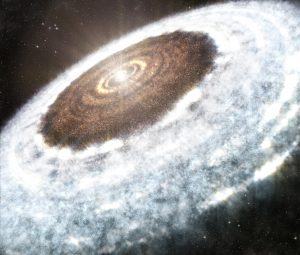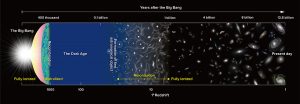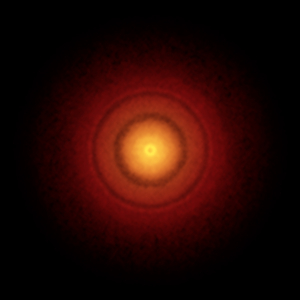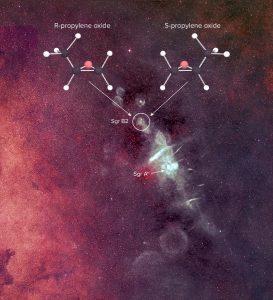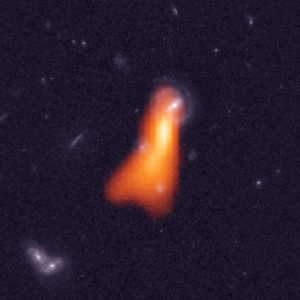ALMA verifies its outstanding polarimetric capabilities.
Stellar Outburst Brings Water Snowline into View
Young star’s outburst provides first-ever view of a water snowline.
ALMA Observes Most Distant Oxygen Ever
ALMA detects most distant oxygen ever.
First Detection of Methyl Alcohol in a Planet-forming Disk
ALMA detects methanol in TW Hya.
Life’s First Handshake: Chiral Molecule Detected in Interstellar Space
Scientists applaud discovery of “handed” molecules in interstellar space.
New Observational Distance Record Promises Important Tool for Studying Galaxies
Astronomers have used new capabilities of the National Science Foundation’s Karl G. Jansky Very Large Array (VLA) to open a whole new realm of research into how galaxies evolve and interact with their surroundings over cosmic time.







